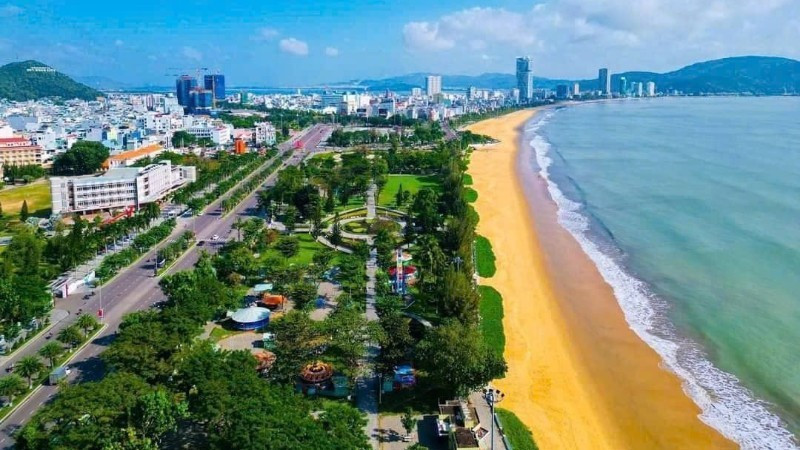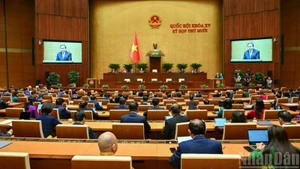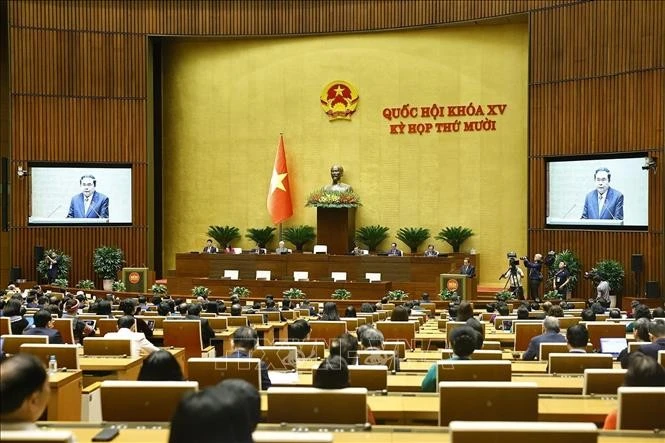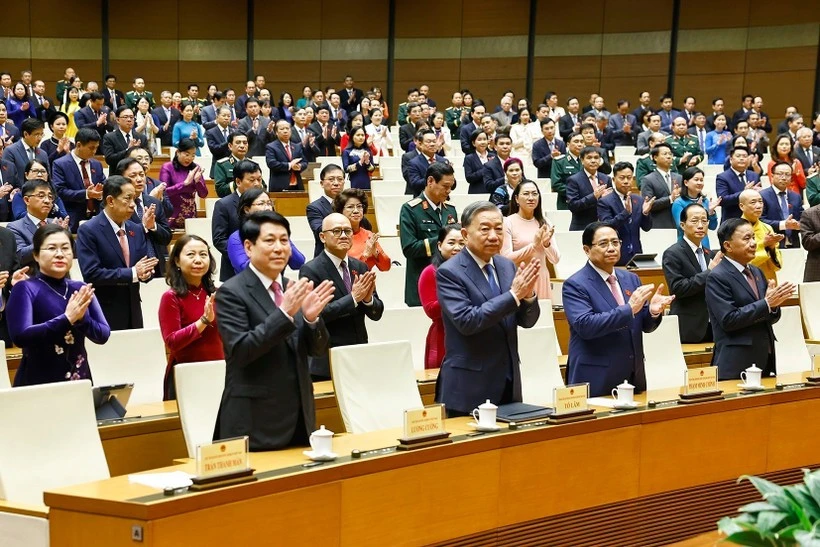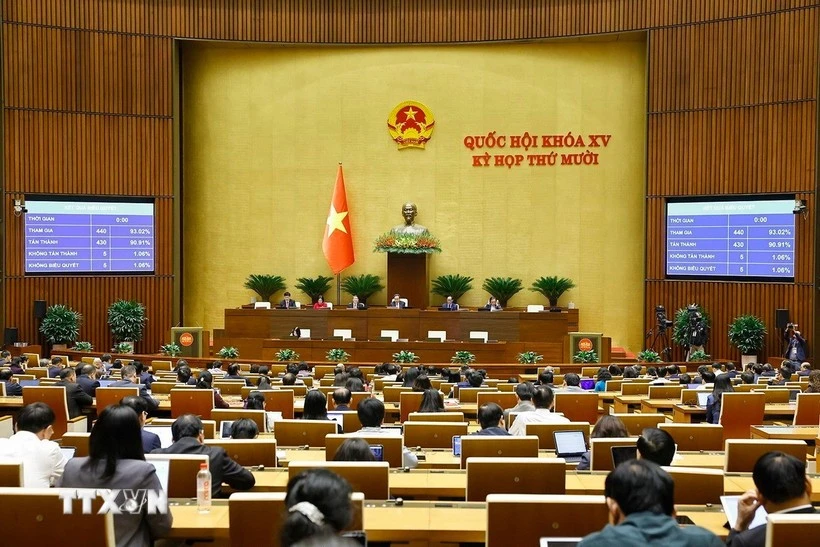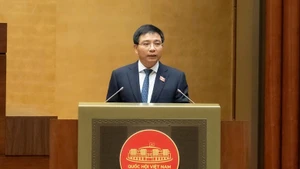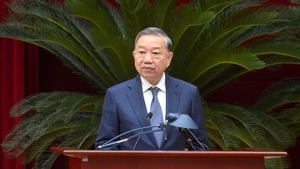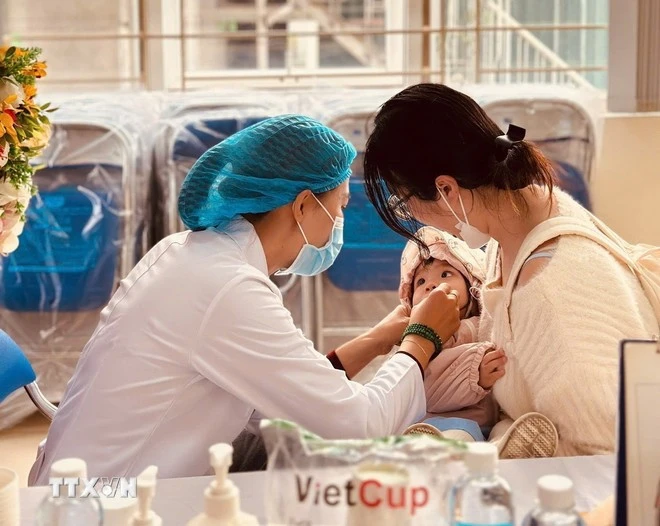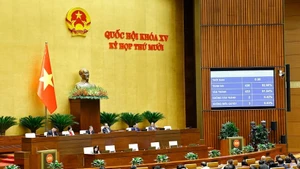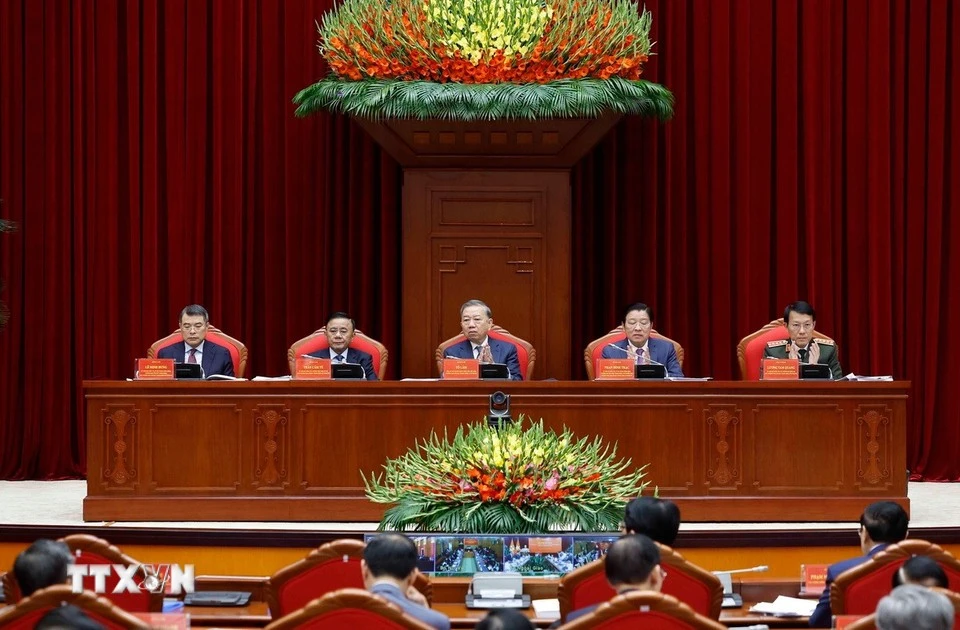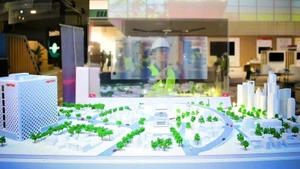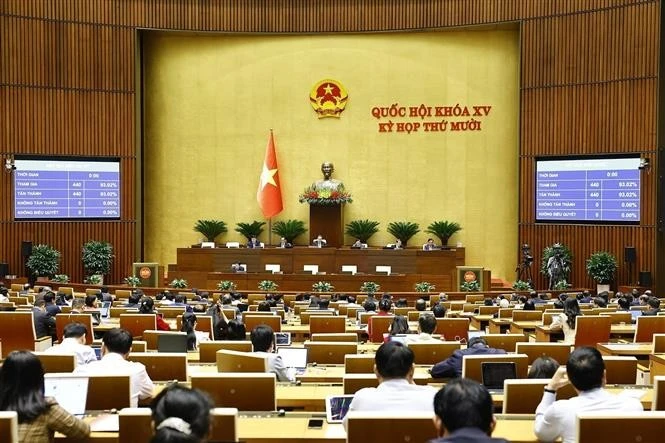The organisation of the first congress of the Gia Lai Provincial Party Committee takes place in the context of the recent merger between the two provinces of Gia Lai and Binh Dinh, with the country entering a new stage of development after nearly 40 years of renovation. This marks an important milestone, affirming that Gia Lai has achieved remarkable and comprehensive accomplishments in various fields.
Comprehensive reform and sustainable development from the roots
Comrade Ho Quoc Dung, Member of the Party Central Committee and Secretary of the Gia Lai Provincial Party Committee, stated: “The merger of provincial-level administrative units is a strategic and breakthrough decision by the Party Central Committee, aiming to streamline the apparatus and improve the efficiency of the political system. For Gia Lai, this is a golden opportunity to maximise its potential and advantages, creating a new and broader development space for the province.”
By the end of the 2020–2025 tenure, Binh Dinh Province had achieved and exceeded 21 out of 22 resolution targets, while Gia Lai Province fulfilled and surpassed 14 out of 23 targets set by the former provincial Party congresses. The average annual economic growth rate reached 6.71%, and per capita GRDP amounted to 3,555 USD per year. The economic structure shifted in the right direction, with industry–construction and services accounting for 68.9%. The total budget revenue by the end of 2025 is estimated at 27 trillion VND, up 20% compared with the resolution target.
Notably, Party building and political system consolidation have been implemented synchronously and resolutely. The administrative apparatus after the merger has been streamlined and made more efficient, reducing 28 district-level administrative units and 238 commune-level units, as well as cutting over 3,100 officials, civil servants, and public employees. This marks an important step in improving the effectiveness of government operations and creating favourable conditions for Gia Lai to make a strong breakthrough.
Hoang Dinh Tien, a retired official in Hoi Phu Ward, shared: “We local people highly agree with the merger policy. It is both a challenge and an opportunity for stronger and more sustainable development. From observation, I can see that the Provincial Party Committee has taken well-prepared and scientific steps, creating strong public consensus.”
Among the breakthrough focuses identified at this congress are to drastically reform leadership methods, accelerate administrative reform, and enhance state management effectiveness. The provincial administrative reform index (PAR INDEX), the provincial competitiveness index (PCI), and the Satisfaction Index of Public Administration Services (SIPAS) have all improved markedly. The province has strongly implemented digital transformation in Party agencies and built e-government. All level-4 public services are provided online, and the Public Administration Service Centre operates effectively. The spirit of “serving the people” has been thoroughly embedded throughout the political system.
A standout achievement of the past tenure has been the strong transformation in economic development, especially in industry and high-tech agriculture. The industrial sector has grown at an average rate of 10.77% per year, accounting for 24.21% of GRDP. Gia Lai has focused on developing key industries such as renewable energy. Wind power projects like HBRE Chu Prong, Nhon Hoa 1, Nhon Hoa 2, Cuu An, and several solar power projects have generated new revenue sources while supplying clean energy for industrial and residential development. High-tech aquaculture in Phu My Dong, Phu My Bac, and Hoai Nhon Dong has formed production, processing, and export chains for shrimp and tuna that meet the requirements of demanding markets.
In agriculture, the expansion of high-tech applications and specialised farming zones has helped the sector maintain stable growth at 3.75% per year. The forest coverage rate has increased to 46.09%, and irrigation systems have been synchronously invested in, contributing to improved productivity and production efficiency.
Alongside that, the service, trade, export, and tourism sectors have all recorded encouraging results. Tourism has become a spearhead economic sector, welcoming an estimated 12.4 million visitors, with diverse attractions such as cultural highland tourism (gong culture and homestays), marine tourism (Quy Nhon Beach and Xuan Hai Beach), adventure tourism, and eco-resorts. Inter-regional tourism products linking the Central Highlands and coastal areas have created varied itineraries for visitors, increasing their length of stay and spending experience. Total export turnover exceeded 12 billion USD.
Parallel to economic growth, the province has focused on comprehensive development in culture, education, healthcare, and social affairs. The rate of people with health insurance has reached 95.53%; the poverty rate has fallen to 2.24%; and over 12,500 temporary and dilapidated houses have been eliminated. Ethnic and religious affairs have received attention, and the great national unity bloc has been further strengthened. Ro Mah H’Lui, a Ba Na ethnic minority resident from Ia Bang Commune, shared: “Thanks to the Party and State’s support policies, the lives of ethnic minority people have improved. Children can attend school, roads are accessible, and healthcare reaches every village. We trust the Party’s leadership, strive to preserve our cultural identity, and contribute to building our homeland.”
In terms of national defence and security, Gia Lai has synchronously implemented measures to maintain political stability and social order, especially in border and ethnic minority areas. The armed forces have been streamlined and maintained high combat readiness.
Efforts to combat hostile and reactionary forces have been conducted resolutely and effectively, preventing the emergence of “hot spots”. Foreign affairs and international cooperation have been expanded. Gia Lai continues to maintain twinning relationships with localities in Laos and Cambodia and has successfully organised numerous investment promotion and local image promotion events. As a result, the province has attracted 38 FDI projects with total capital exceeding 1.75 billion USD during 2020–2025.
Aspiration to rise and define a new position
Entering the 2025–2030 tenure, Gia Lai aims to become a regional centre for processing, manufacturing, renewable energy, and high-tech agriculture. In addition, the province will strongly develop services and tourism, focusing on community-based, green, and sustainable tourism products that leverage its coastal, mountainous, and cultural heritage advantages.
A key highlight will be stronger connectivity within the province and across regions. Investments will be boosted in transport infrastructure, seaports, airports, expressways, and logistics systems to facilitate socio-economic development and deepen integration into national and global value chains.
To achieve its strategic goals, Gia Lai has set out five growth pillars: developing a robust processing and manufacturing industry as the backbone of the economy; turning tourism into a true spearhead sector; advancing high-tech agriculture and sustainable forestry; developing port–logistics services; and promoting rapid, sustainable urban development.
The province has also defined clear breakthrough areas: renewing development thinking, advancing science and technology, building high-quality human resources, and investing heavily in transport and logistics infrastructure. Science, technology, and innovation are identified as the main driving forces for improving productivity, quality, and economic efficiency. The province is focusing on developing innovation centres, digital infrastructure, and accelerating digital transformation in state administration, businesses, and social life. The target is for the digital economy to account for 25–30% of GRDP by 2030.
Alongside economic development, Gia Lai continues to prioritise culture, education, healthcare, and social welfare as key factors for improving people’s quality of life and building a civilised, happy, and sustainable society. Education and human resource development are given top priority. The province aims to raise the proportion of trained workers to over 75% by 2030 while focusing on developing high-quality human resources to meet the demands of economic restructuring and international integration.
Healthcare is also a key concern. Gia Lai will continue investing in upgrading medical facilities, implementing smart healthcare systems, and developing a model combining traditional and modern medicine. The goal is to ensure all citizens have access to high-quality healthcare services, moving towards universal free healthcare in the future.
In the context of complex global and regional developments, Gia Lai identifies defence and security as crucial regular tasks. The province is building a comprehensive all-people national defence posture linked with a people’s security posture, firmly safeguarding sovereignty, borders, and public order. At the same time, Gia Lai will enhance foreign relations, particularly with provinces in southern Laos and northeastern Cambodia, to promote trade, tourism, and culture as drivers for socio-economic development.
According to Ho Quoc Dung, Secretary of the Gia Lai Provincial Party Committee, the achievements gained are crucial foundations for Gia Lai to continue renewing its mindset and acting decisively in the new tenure. With the unity and determination of the entire Party, people, and armed forces, Gia Lai will move forward firmly into the future, becoming a fairly developed province in the country, worthy of its traditions and potential.
